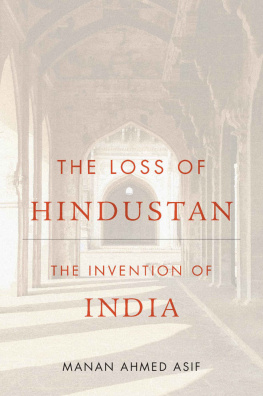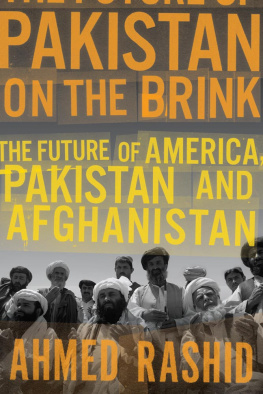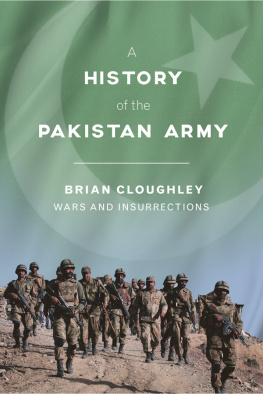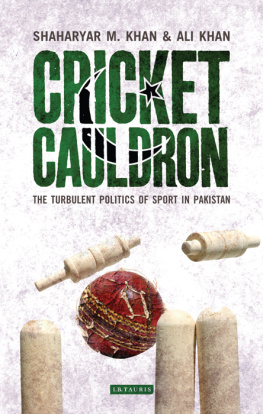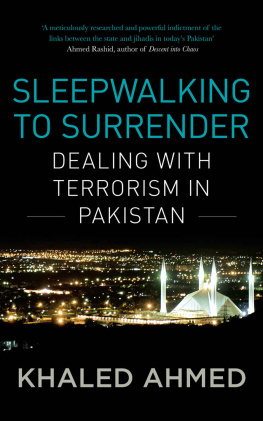If you read only one book about Pakistan this year, read this. A rare combination of erudition, dark humor, and clarity of thought, Where the Wild Frontiers Are strips bare the prejudices which distort Americas view of Pakistan. This is not the country of the U.S. imaginationa near-failed state where bearded fanatics and mad mullahs burn the American flag while darkly plotting to seize control of the nuclear bombs. Manan Ahmeds Pakistan is a diverse and dynamic country with a rich past and promising future. Its history is shaped by Islam, by British colonial rule, and, more recently, by American support for its military dictators. Its future lies in democracy. But this book is not only about Pakistan. It is also about the United States, and its peculiar blindness to the way it slips into the old habits of British colonial thinking. Creating a Pakistan in its imagination very different from reality, it convinces itself that without its firm guidance, the country would descend into chaos. Despite its professed commitment to democracy, America has never really learned to trust the masses of Pakistan or, indeed, of other Muslim countries. This book should be compulsory reading for anyone interested in understanding why the United States has repeatedly failed to build an effective relationship with Pakistan.
MYRA MACDONALD
senior Reuters journalist, blogger, author of Heights of Madness ,
a book about the Siachen war


The beautiful art reproduced here is the creation of Daisy Rockwell (co-blogger at Chapati Mystery since 2006) and is used here with her permission. You can learn more about her work at www.daisyrockwell.com.
Just World Books is an imprint of Just World Publishing, LLC
All text 2011 Manan Ahmed. Painted images on cover and in book interior 2011 Daisy Rockwell and used here with her permission. Map 2010 Just World Publishing, LLC. All rights reserved. No part of this book may be reproduced or transmitted in any form or by any means, electronic or mechanical, including photocopy, recording, or any information storage retrieval system, without permission in writing from the publisher, except brief passages for review purposes. Visit our website at www.justworldbooks.com.
Second printing, 2011.
Cartography by Lewis Rector and Moacir P. de S Pereira and Just World Publishing, LLC. Overall book design by Lewis Rector for Just World Publishing, LLC. Typesetting and design of chapter headings by Jane Sickon for Just World Publishing, LLC. Printed by BookMobile, USA, and CPI, UK.
Publishers Cataloging-in-Publication
(Provided by Quality Books, Inc.)
Ahmed, Manan.
Where the wild frontiers are : Pakistan and the
American imagination / by Manan Ahmed ; with a foreword
by Amitava Kumar and illustrations by Daisy Rockwell.
p. cm.
Includes bibliographical references.
LCCN 2011926654
ISBN-13: 978-1-935982-06-7
ISBN-10: 1-935982-06-0
1. PakistanPolitics and government1988
2. PakistanForeign relationsUnited States. 3. United
StatesForeign relationsPakistan. 4. PakistanPress
coverage. 5. TerrorismPrevention. I. Title.
DS389.A36 2011 954.91053
QBI11-600087
To all at Sarai Sultan, Lahore,
and Drexel Ave., Chicago
Contents
by Amitava Kumar
Title image: Goggles 1: U.S. President George W. Bush, sporting a pair of goggles.
The purpose of this chapter is to begin with a sample of the main concerns of the blog: commentaries on U.S. foreign policy, critiques of the narratives prevalent in mainstream media, and attempts to offer historical context for political happenings. The happenings inside the social, cultural, and political landscapes of the United States and South Asia remain the focus, and the entries in this chapter lay out that terrain.
Title image: Portrait of Osama bin Laden with a magical curtain.
The legal, military, and cultural innovations (so to speak) of the Iraq War cast a long, long shadow within and outside the United States. As such, it was important to collect most of the worthwhile posts that deal with the Iraq Waras a distant observerat the front of the book.
Title image: Goggles 2: U.S. Secretary of State Condoleezza Rice, resplendent in goggles.
Speaking to the media, metaphorically speaking, is a particular obsession of Chapati Mystery (CM).... These entries represent the need to resist the overabundance of pablum, which newspapers and magazines... force onto the ill-informed and the misinformed.
Title image: Tee Vee: General Pervez Musharraf, hands outstretched.
The debate over the empire-ness of America seems never-ending, because it is a debate not over history but over representation. Early in the life of CM, I wrote a series of posts in an effort to engage with historian Bernard Porters work on the British Empire. Those posts form the backbone of this chapter, but the last post... is really a summation of my own reading of Americas past.
Title image: Buri Nazar Wale Tera Munh Hara: Roadtrip Devi.
This chapter is a collection of posts dealing with the support the Bush White House showed to Pervez Musharraf and the antidemocratic agenda in Pakistan. Of particular interest should be To Dream a Man as well as the Round-Up series, which tried to document the protests against Musharrafs rule as they unfolded in 2007 and 2008.
Title image: Jacqueline Kennedy and her sister, Lee Radziwill, take a camel ride in Karachi, 1962.
In April 2007, I began the Tick Tock series, which was a countdown to the ouster of President Musharraf.... As the events spiraled out of U.S. control, the administration continued to deny that it had no idea what was going on in Pakistan.
Title image: Benazir 8: Benazir Bhutto greets her admirers shortly before the bomb goes off.
The idea of unknowing (or deliberate ignorance) is at the heart of the empireand arguably, specifically, the American Empire.... The posts in this chapter are bits of knowledge about Pakistansketches of personalities and eventswhich collectively remain out of purview of the empire.
Title images (clockwise from top left): General Ayub Khan, President of Pakistan 19581969, General Yahya Khan, President of Pakistan 19691971, General Zia-ul-Haq, President of Pakistan 19771988, and General Pervez Musharraf, President of Pakistan 20012008.
These bits of profiles, studies of persons, were often meant to introduce the American reader to the contestations over public memory and the ways in which pasts are continually erased in contemporary Pakistani politics....
Title images (clockwise from top left): Liaquat Ali Khan, Prime Minister of Pakistan 19471951, assassinated in 1951, Zulfiqar Ali Bhutto, Prime Minister of Pakistan 19731977, Nawaz Sharif, Prime Minister of Pakistan 19901993 and 19971999, Benazir Bhutto, Prime Minister of Pakistan 19881990 and 19931996, and (centered) Yousuf Raza Gilani, Prime Minister of Pakistan 2008present.



